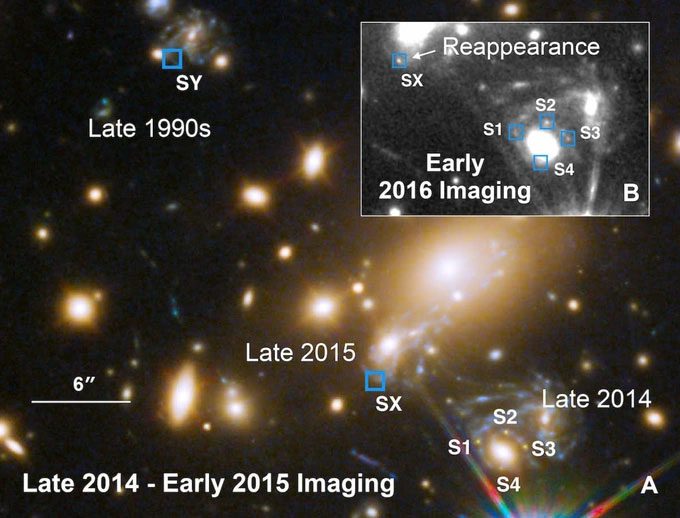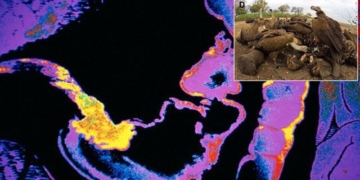The Hubble Space Telescope has captured images of a fateful star that has “died” five times, spanning the years from 1990 to 2016 during observations from Earth.
As we know, the universe is rapidly changing and continuously expanding each day. This leads to peculiar situations, such as observing the same star’s death multiple times.
A notable unfortunate star is a supernova named Refsdal.

The Refsdal supernova has “died” 5 times as observed by the Hubble Space Telescope. (Image: Science).
In 2014, observers first detected the image of the supernova through the Hubble Space Telescope. However, what surprised them was that this same star emitted brilliant light at five different moments, including once in the late 1990s, twice in late 2014, once in late 2015, and once in early 2016.
Interestingly, each time the star shines is also a time it explodes into dust, never to be restored. In other words, we have observed the deaths of the same unfortunate star five times.
Why is there such an absurdity?
According to explanations, the light from a supernova radiates in all directions. However, as the light travels through space, it is distorted by the immense gravitational field of a massive galaxy cluster.
This causes the light from the supernova to reach Earth via multiple different paths. In other words, each appearance of the supernova has arrived at us through a different route in the universe.
Imagine five trains leaving the same station but traveling along different tracks. Due to a strange cosmic arrangement, they arrive at the same station, but at different locations and times.
According to scientists, by observing the appearances of supernovae on Earth, we can measure the time they take to travel, which allows us to calculate the expansion rate of the universe during the light’s journey—known as the Hubble constant.
Additionally, there are other methods to measure the Hubble constant, such as based on the cosmic microwave background, including residual light or radiation transmitted through space immediately after the Big Bang.


















































